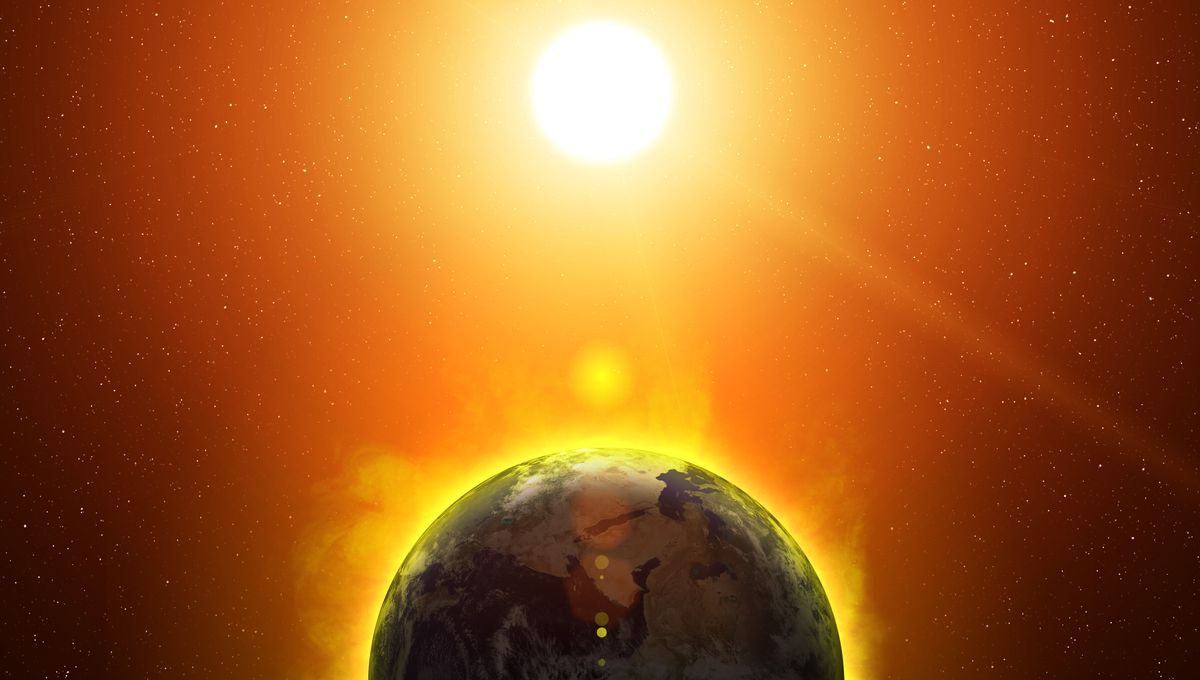
The world has warmed more since the start of the Industrial Revolution than previously acknowledged, new evidence indicates, with the world already exceeding 1.5°C (2.7°F) above pre-industrial conditions. If so, it means the limits the world agreed on in the 2015 Paris Accord have already been exceeded. However, some climate scientists have expressed skepticism about the claim.
The rise in global temperatures is expressed compared to pre-industrial conditions, but determining quite what those conditions were is a challenge. Even after the invention of the thermometer, for centuries direct measurements of air temperature were confined to cities in small parts of the planet. We didn’t start systematically recording water temperatures until the mid-19th century, and even then only on well-trafficked shipping routes.
A wide variety of proxy data has been used to construct an estimate of global temperatures before industrialization took off, but a new sample taken from Eastern Caribbean sea sponges suggests conditions were colder than previously acknowledged. If the new data is right, the baseline we are comparing ourselves has been set too high, making the rise half a degree greater than existing estimates.
Naturally, there is considerable skepticism around the idea that results from just one location are more accurate than those collected, albeit patchily, around the globe. “A single new paleo record off the coast of Puerto Rico is a valuable addition to the large evidence of warming,” Professor Malte Meinshausen of the University of Melbourne, who was not involved in the study, commented. “But it is just that, one study among hundreds. The [Intergovernmental Panel on Climate Change] IPCC’s findings still stand strong.”
However, in a media conference, two of the authors of the new paper made the case for why their sample should be considered the new standard. Most proxy temperature data is collected on land in the form of tree rings or stalactites, and therefore subject to extreme local variation so that many data points are required to smooth things out. Even corals, the primary marine temperature proxy, experience considerable fluctuations.
The team used sclerosponges collected 33-91 meters (110-300 feet) below the surface, part of what is called the Ocean Mixed Layer. These sponges grow very slowly so some specimens date back 300 years. Like corals, the temperatures of the water in which the sponges live leaves a record in the amount of strontium incorporated into their calcium carbonate skeletons.
“The dominant source of variability in Caribbean [sea temperatures] is atmospheric forcing,” lead author Professor Malcolm McCulloch of the University of Western Australia said at the media conference. “There’s very little influence from other variable sources such as [ocean currents]. We’re also looking at the mixed layer, which has much less variability.”
Comparing the temperature changes the sponges experienced since 1960 with global conditions, which the authors noted have been precisely recorded over that period, shows a very close match. This leads McCulloch and colleagues to conclude their sample should also be a good indicator of global climatic conditions in earlier times when other sources are less reliable. “There is good physical oceanographic reasons why it should be able to get a global average and empirically we’ve demonstrated it.”
Establishing pre-Industrial temperatures is complicated by the fact that between 1790 and 1840 a series of large volcanic eruptions produced substantial temporary cooling. Proxy data for this period is considered a poor guide to general pre-industrial conditions. This study’s sponges reveal this cooling, but they also provide a guide to temperatures between 1700 and 1790, and from 1840 to 1860, which the authors argue should be considered the true pre-industrial baseline. From the mid-19th century, the effects of human activity become clear, with warming rates accelerating since 1960.
“Thus, the opportunity to limit global warming to no more than 1.5°C by emission reductions alone has now passed and at current emission rates, the 2°C threshold for [global marine surface temperatures] will be reached by the late 2020s,” the authors write.
If they’re right, temperatures in the 18th century were half a degree cooler than the IPCC has estimated. Modern temperatures therefore are already more than 1.5°C warmer, even if you smooth out extreme years like 2023.
McCulloch acknowledged that the 1.5°C target is somewhat arbitrary for the point where unsafe warming will kick in. It is based on observations of the effects of the warming we have seen, and if that warming has been miscalculated we may expect to see the impacts predicted for 1.5°C, 2°C, or 3°C at somewhat higher points.
Nevertheless, McCulloch says “We’re going to experience more serious impacts than we may have anticipated,” adding, “From the policy perspective it should be a very simple thing of getting emissions down as soon as possible.”
Despite the authors’ confidence in their findings, few climate scientists are likely to consider proxies from one location definitive. The obvious first step for verification would be to explore sea sponges from similar depths elsewhere in the world. However, the authors note the species they used (Ceratoporella nicholsoni) is not found in the Pacific, so a suitable counterpart will have to be identified.
The study is published in Nature Climate Change.
Source Link: The World May Have Already Exceeded 1.5°C Global Warming